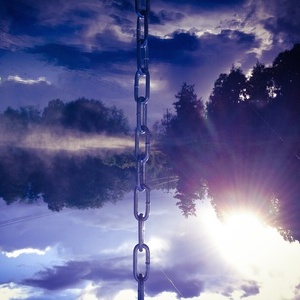There’s not really anything like a good noise cassette. Whether physically spindling or ripped/downloaded, the format plays according to its own rules. Linda Spjut’s Into The Flesh, which came out on YYAA earlier this year, is a good example of what can be so cool about the noise cassette: ideas of different shades, styles, moods and intensities can follow each other at a pace or discontinuity that might be considered haphazard in another format, but is not only fair game but laudable in this one.
All the vignettes or musical passages within the whole don’t even have to be that good for the cassette to be good—there are parts on Into The Flesh that are kind of boring or too-familiar to me as a listener (like backwards guitar or I’m-tripping-in-the-desert psych folk), but I still consider them great. I wouldn’t say my interest in those parts come from like a lo-fi fetishism, but rather just an appreciation of how the artist chooses to structure the cassette’s time.
That might really be what differentiates the cassette from other stuff in an interesting way: it’s much more a functional depository of time than a loaded form with Important History like an LP. Nobody venerates cassettes as a form in the way that they do LPs or albums: flippancy and experimentation come way before expectations of legitimacy, structure or "meaning". Also, there’s a lot more room for humour, which is always a good thing. Cassettes are even measured by the time they hold. A CS50, a CS30: that terminology on the cassette label order form just says how many minutes are on it. And you can do whatever you want with those minutes. It’s not an "album listening" experience, it’s just time you can dip into with fewer expectations.
Spjut’s work here offers a cool bit of time because, first and foremost, the music is evocative of the colour blue in a really striking way. Each two or three minute passage is like breaking into another striated layer of ice and rubbing your hand against it. It brings to mind the tonal qualities of Francois Bayle’s musique concréte classic Erosphere, but whereas that record has a proto-Evol quality of sounding like a perfectly constructed bendable sculpture of a dripping, plastic squeegee (that is blue), this one is just like some blue dirt or the product of a weird enclave in an arctic campsite. It alternately sounds irritated, spaced out and distracted. More than a lot of music it sounds like something Linda Spjut made just because she liked the way it sounded a lot.
<div class="fb-comments" data-href="http://thequietus.com/articles/16774-linda-spjutt-into-the-flesh-review” data-width="550">


